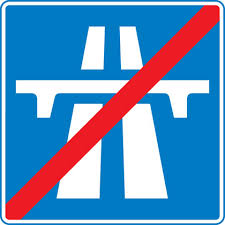Navigating Safely: The Importance of Highway Code Signage in the UK

The Importance of Highway Code Signage
Highway code signage plays a crucial role in ensuring road safety and efficiency for all road users. These signs are designed to provide essential information, guidance, and warnings to drivers, cyclists, and pedestrians on the road.
Types of Highway Code Signage
There are various types of highway code signage that serve different purposes:
- Regulatory Signs: These signs inform road users of traffic laws and regulations that must be followed, such as speed limits, no entry zones, and parking restrictions.
- Warning Signs: Warning signs alert drivers to potential hazards ahead, such as sharp bends, pedestrian crossings, or slippery roads.
- Information Signs: Information signs provide guidance on directions, distances to destinations, services available at upcoming exits, and other useful information for motorists.
- Direction Signs: Direction signs help drivers navigate complex road systems by indicating routes to specific locations like towns, cities, motorways, or tourist attractions.
- Road Markings: Although not technically signs, road markings like white lines, zebra crossings, and lane dividers are crucial for regulating traffic flow and ensuring safety on the road.
The Role of Highway Code Signage in Road Safety
Highway code signage is vital for preventing accidents and promoting safe driving practices. Clear and visible signage helps drivers make informed decisions on the road and reduces the risk of confusion or errors. By following the instructions provided by highway code signage, motorists can navigate roads more efficiently and avoid dangerous situations.
Maintaining Highway Code Signage
To ensure the effectiveness of highway code signage, regular maintenance is essential. Signs should be kept clean, free from obstructions like overgrown vegetation or graffiti, and positioned correctly for maximum visibility. Faded or damaged signs should be promptly replaced to prevent misinformation or misinterpretation by road users.
In Conclusion
In conclusion, highway code signage is a fundamental component of road infrastructure that promotes safety, orderliness, and efficiency on our roads. By adhering to the guidance provided by these signs and markings, we can all contribute to creating a safer environment for everyone who uses our highways.
Understanding Highway Code Signage: Key FAQs Answered
- What do different colours of road signs indicate in the highway code?
- How can I report a damaged or obscured highway code sign?
- Are there specific rules for interpreting road markings in the highway code?
- What should I do if I miss a directional sign on the road?
- Is it necessary to follow all temporary traffic signs and signals as per the highway code?
What do different colours of road signs indicate in the highway code?
In the Highway Code, different colours of road signs serve specific purposes to convey important information to road users. Understanding the significance of these colours is essential for safe and efficient navigation on the roads. For example, red signs are often used for prohibitive or regulatory information, such as no entry or stop signs. Blue signs typically indicate motorway information or services, while green signs are commonly associated with directional information to places of interest. Yellow signs are used for warnings or temporary traffic control measures, and white signs are often seen on regulatory markings like speed limits. By recognising and interpreting the various colours of road signs in the Highway Code, drivers can better comprehend and respond to the instructions provided for a smoother and safer journey.
How can I report a damaged or obscured highway code sign?
If you encounter a damaged or obscured highway code sign while on the road, it is essential to report it promptly to the relevant authorities for necessary action. You can typically report such issues to the local council or highways agency responsible for maintaining road signage in the area. Providing details such as the location of the sign, a description of the damage or obstruction, and any other relevant information can help expedite the repair or replacement process. By reporting damaged or obscured highway code signs, you play a crucial role in ensuring road safety and clarity for all road users.
Are there specific rules for interpreting road markings in the highway code?
In the Highway Code, specific rules govern the interpretation of road markings to ensure clarity and consistency for road users. Road markings play a vital role in guiding traffic flow, indicating restrictions, and enhancing road safety. Understanding these markings is essential for all drivers, cyclists, and pedestrians to navigate roads effectively and comply with traffic regulations. By adhering to the rules outlined in the Highway Code regarding road markings interpretation, road users can contribute to safer and more orderly journeys on our highways.
What should I do if I miss a directional sign on the road?
If you miss a directional sign on the road, it is important to stay calm and safely navigate your way back to the correct route. You should avoid making sudden or unsafe manoeuvres, such as sudden U-turns or stopping abruptly on the road. Instead, continue driving until you reach a safe opportunity to turn around or find an alternative route. It is advisable to use GPS navigation or consult a map to help guide you back to your intended destination while following all traffic laws and regulations. Remember that road safety is paramount, so always prioritise safe driving practices when correcting a missed directional sign.
Is it necessary to follow all temporary traffic signs and signals as per the highway code?
It is essential to adhere to all temporary traffic signs and signals as outlined in the Highway Code. Temporary signs are put in place to inform road users of changes in road conditions, hazards, or diversions that may affect their journey. Ignoring these signs can lead to confusion, delays, or even accidents on the road. By following temporary traffic signage diligently, drivers can navigate safely through construction zones, events, or other temporary situations while maintaining road safety and orderliness for themselves and others sharing the road.
